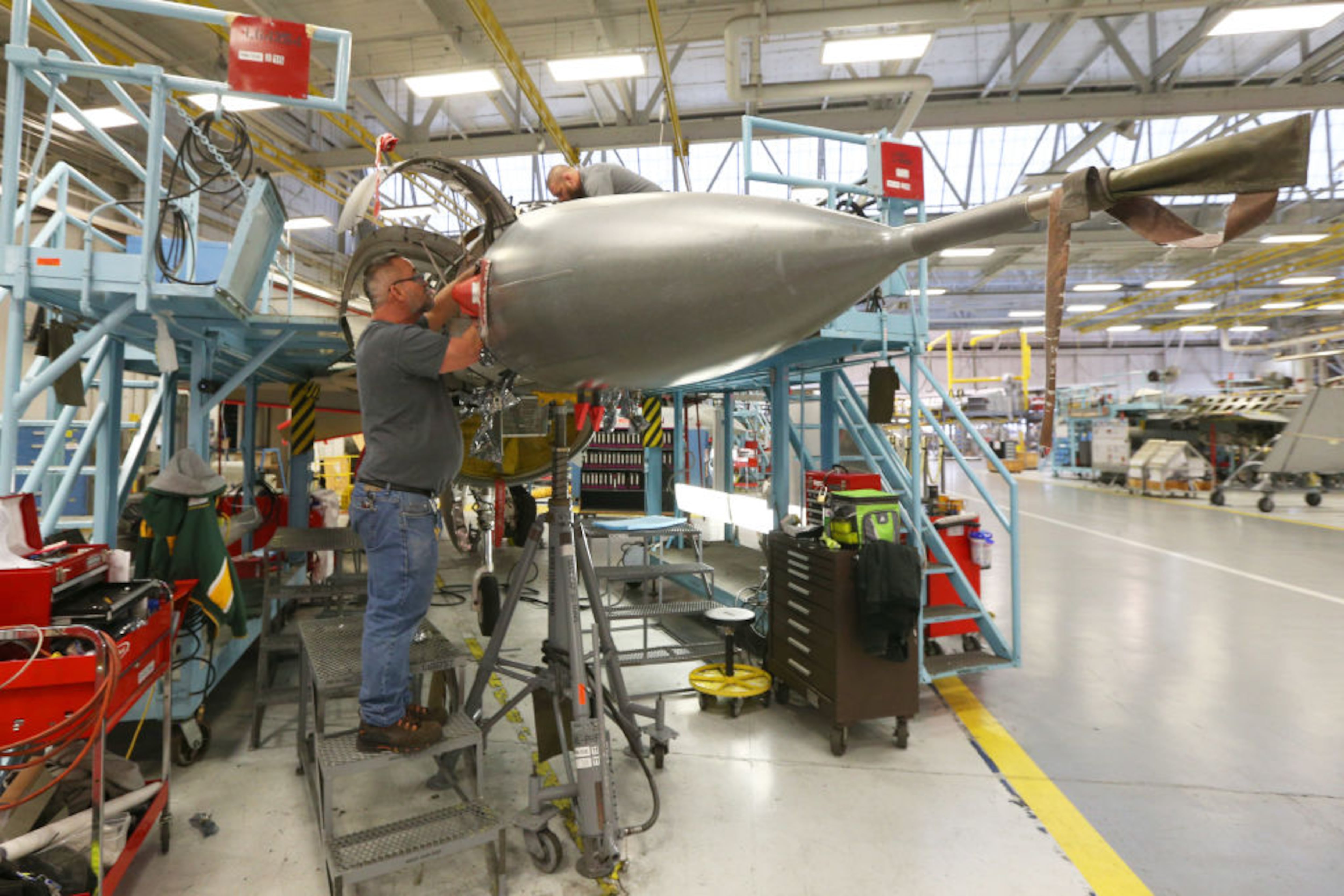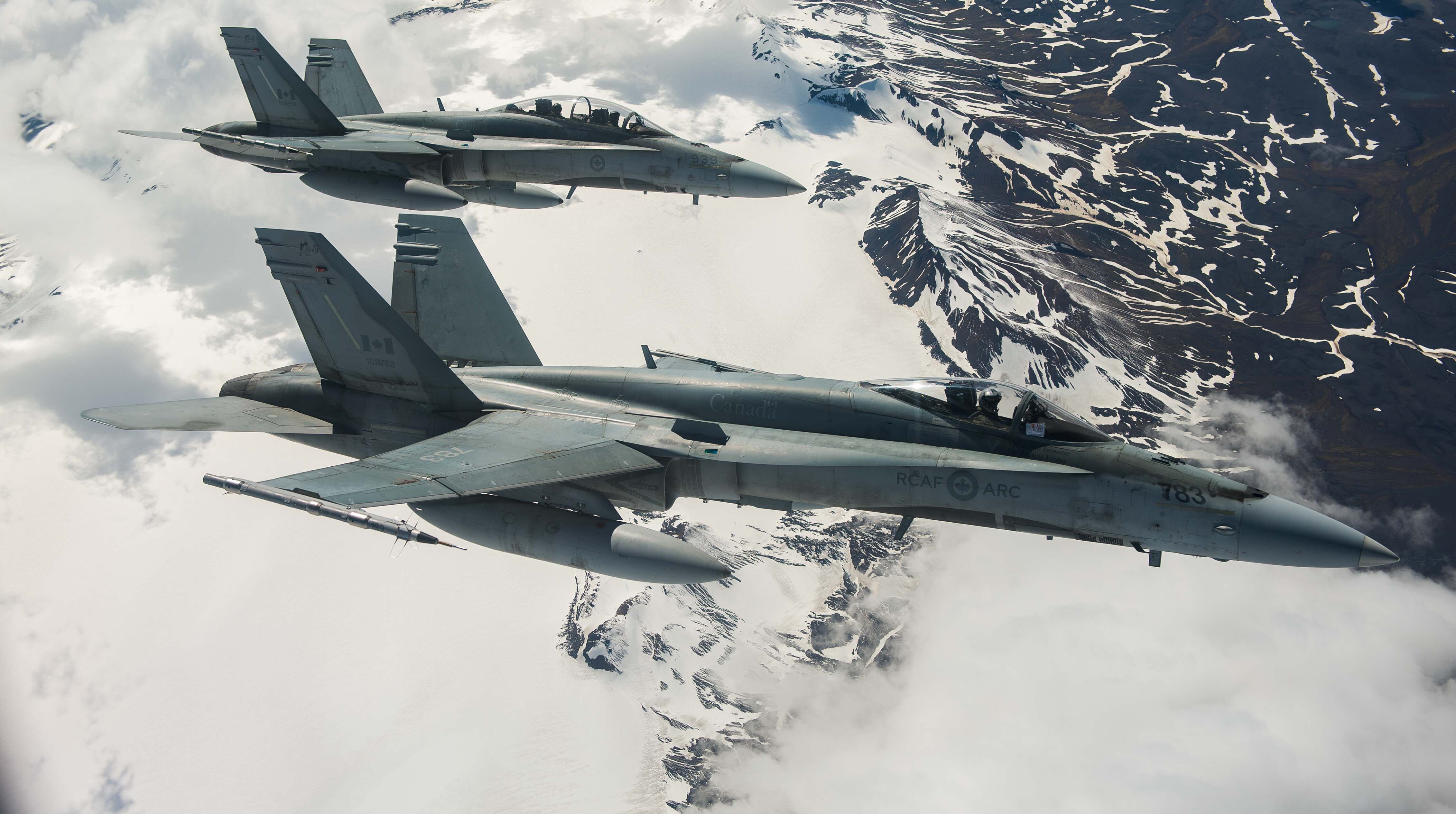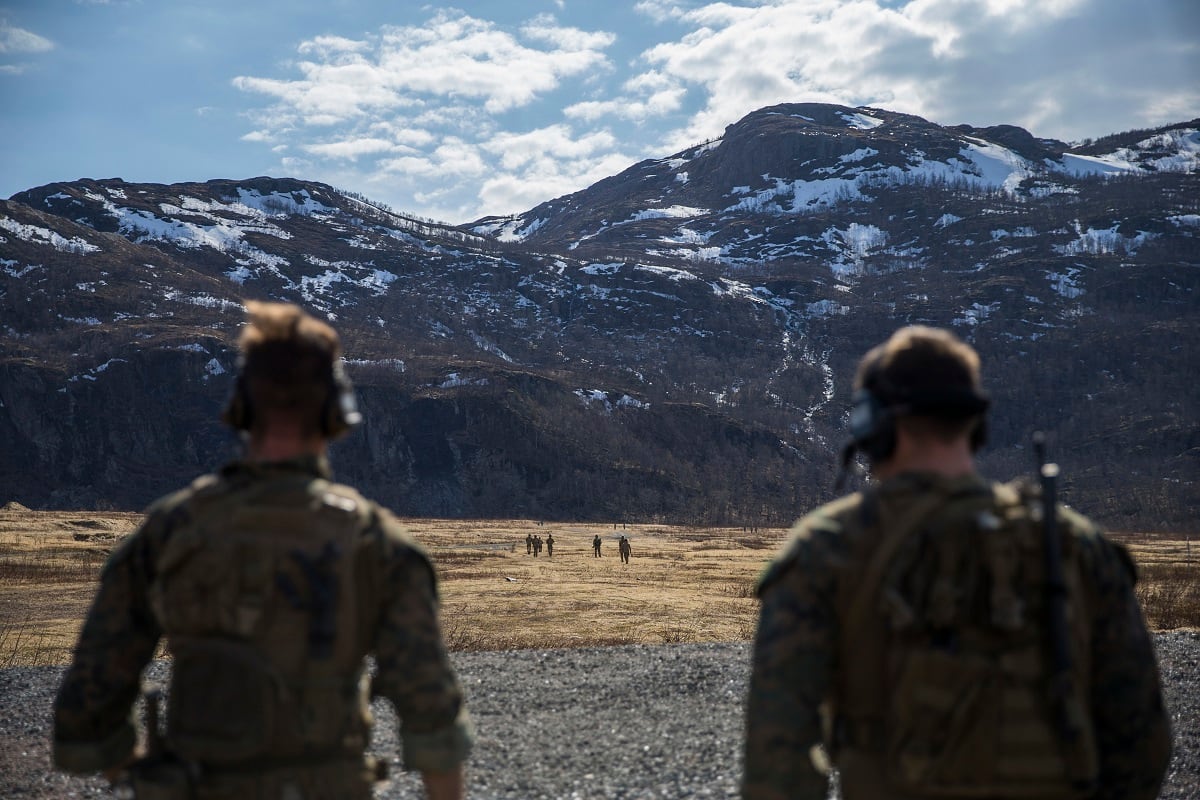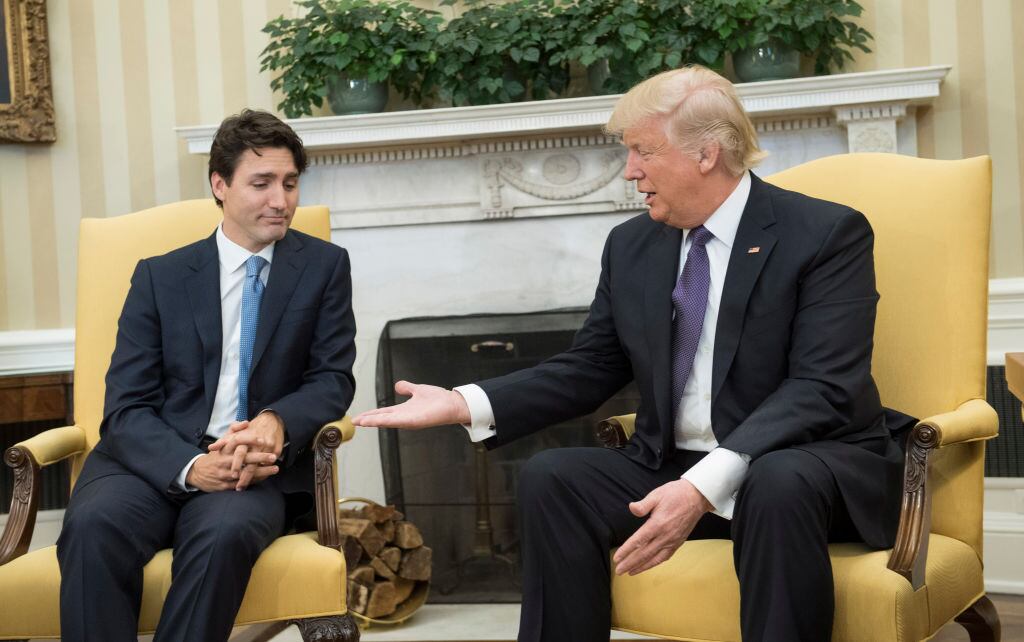WASHINGTON — As U.S. defense contractors engage with potential foreign customers at the Farnborough Airshow this month, they may find themselves in damage-control mode.
U.S. President Donald Trump’s harsh rhetoric to NATO allies on defense spending, combined with new tariffs on steel and aluminum imports from Europe, Mexico and Canada, have shaken up the cooperative relationship between the United States and some of its closest allies — and with it, the potential for arms deals.
Some U.S. industry officials and analysts are concerned that those bigger political fights could give European defense companies a better argument for why NATO countries should buy European.
RELATED

For years, certain European interests spun a narrative about why Europe needed to protect its own industry to guard against U.S. unpredictability, according to Jim Townsend, a former deputy assistant secretary of defense for European and NATO policy from 2009 to 2017, and currently adjunct senior fellow at the Center for a New American Security.
“That voice, that narrative — which was held by a bit of a minority in Europe — has now been given some real substance because of what has happened here with the tariffs being levied, with potential that we’re going to have a back-and-forth tariff fight,” he said at a June 26 CNAS event
Canada’s future fighter contest has already become a flash point for the tariff issue.
Both Lockheed Martin’s F-35 and Boeing’s Super Hornet had previously been considered top contenders to win the competition. However, in June, Reuters reported that Canada could lash out against U.S. defense firms and build penalties into its solicitation language for entrants from countries that have caused economic harm to Canada.
RELATED

One source familiar with those discussions confirmed to Defense News that the Canadian government is considering such measures. Further, they have forced the companies involved in the competition to sign a nondisclosure agreement — essentially gagging them from speaking about the progression of the contest.
Germany’s competition to replace its fleet of Panavia Tornado jets has also taken a political edge as of late.
Lockheed hopes to sell its F-35, while Boeing has marketed variants of the F-15 and the F-18 for the deal. But in the end, the German Defence Ministry favors a local model — a beefed-up version of the Eurofighter Typhoon — in order to support the European aerospace industry until a new domestic jet can be fielded around 2040.
While it seems the Tornado replacement program in particular is representative of a broadening trade war and worsening defense-spending dispute, one analyst argued that U.S.-German defense trade is too small of a factor to be used by either side as a negotiating tactic.
“The volume just isn’t there,” said Christian Mölling, deputy director of the German Council on Foreign Relations in Berlin.
But that doesn’t mean political pressures aren’t taking a toll on the U.S.-German relationship. The U.S. president reportedly wrote letters to key alliance members ahead of the July 11-12 NATO summit in Brussels, including German Chancellor Angela Merkel, admonishing them for insufficient defense spending.
RELATED

Those types of missives are customary instruments for getting key messages out before international gatherings like the summit, said Mölling. But the international hype around them shows how “everybody is on the edge,” he added.
Meanwhile, Belgium’s pick of its next fighter jet stands to send a strong political signal, due to Brussels’ position as the executive arm of the European Union and seat of the European Commission, analysts argue.
Brussels was set to pick between the F-35 and Eurofighter Typhoon, but has delayed a final contract award until this October as it adds in two new options — Dassault’s Rafale and the upgrade of its legacy F-16 fleet.
Richard Aboulafia, an aerospace analyst from the Teal Group, said Belgium’s pick could help define whether there is greater preference for European fighters due to the current trade environment — which some U.S. sources believe has helped contribute to Belgium’s decision to further open the competition.
Some European analysts have made the case that Belgium should pick a European plane.
“Acquiring the F-35 does not go in the right direction,” said François Lureau, of consultancy EuroFLConsult and former chief of the French Defense Ministry’s procurement office.
An acquisition of a U.S. fighter would come at a time when Merkel and French President Emmanuel Macron are pushing for a stronger European defense, which requires greater European cooperation, Lureau said. That pursuit of strategic autonomy would be undermined by acquisition of the F-35, which would drain moves to boost European funding for research and development as well as support for the European arms industry.
In all three competitions, the common denominator is the presence of the F-35. That’s no mistake, Aboulafia said.
“The strongest selling point for F-35 was the strategic relationship with the U.S. Will that survive Trump?” he asked. “If that relationship doesn’t survive, then the F-35 takes some damage.”
One industry official acknowledged that the geopolitical situation had already helped generate some backlash to U.S. defense products. However, the source stressed that these tensions reside at the top levels of government, not within militaries’ relationships with the United States.
“The people that are asking for, receiving, and evaluating and recommending the solution to their solicitation aren’t biased by those [political] factors,” the source said. “We can only work the acquisition community. We really can’t work the emotions of parties and politicians.”
While acknowledging that U.S. companies may find themselves in an uncomfortable moment, another aerospace industry official expressed confidence that foreign military sales ultimately would not become subject to the geopolitics of the moment.
“I don’t think we’re at the point where a foreign military customer who is sold on everything from price to quality to life-cycle value to interoperability with allied forces pulls back because of some tweets on trade or statements at a rally,” the source said.
“Foreign military sales are careful, long-lead decisions that take years and weigh a number of important factors beyond the headlines. I don’t get the sense at this time that customers on the brink of buying a U.S. product are pulling back because of the broader churn on trade right now.”

Production impact
For the two largest defense aerospace firms — Lockheed and Boeing — the proposed tariffs would seem to have little material effect, at least in the short term.
Boeing uses little steel for its planes and sources 90 percent of its aluminum from U.S. suppliers, the company said in a statement. However, it is paying close attention to how the tariffs could potentially affect its supply chain.
“We have a combination of domestic and international suppliers,” Boeing CEO Dennis Muilenburg said during a May 9 event in Washington. “The way we risk-manage that and hedge our positions, we don’t see the current tariffs as having a material effect on our business, but it is something we’re watching because it’s the broader question of trade relationships and effective trade agreements around the world.”
RELATED

Eric Branyan, Lockheed’s vice president for F-35 supply chain management, said the tariffs would have “very little” near-term impact to the F-35 program because Lockheed has already entered into long-term fixed-price agreements that set the price for materials like steel and aluminum over a period of five to seven years.
Past then, Lockheed will have to renegotiate with suppliers, but the company estimates that it would have an impact of less than 5 percent.
“The cost of the raw materials of the airplane, like steel and aluminum, is really a very small part,” Branyan said. “The real cost is the value-added machining [of] it, [and the] human labor to go make parts.”
Aaron Mehta contributed to this report.
Valerie Insinna is Defense News' air warfare reporter. She previously worked the Navy/congressional beats for Defense Daily, which followed almost three years as a staff writer for National Defense Magazine. Prior to that, she worked as an editorial assistant for the Tokyo Shimbun’s Washington bureau.
Sebastian Sprenger is associate editor for Europe at Defense News, reporting on the state of the defense market in the region, and on U.S.-Europe cooperation and multi-national investments in defense and global security. Previously he served as managing editor for Defense News. He is based in Cologne, Germany.








